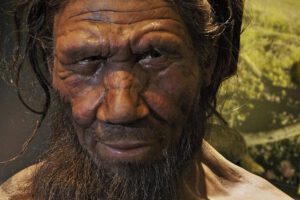As modern humans migrated out of Africa they interbred with Neanderthals, so all non-Africans carry some remnant of those ancient encounters, and new research by scientists at the University of California, Davis, shows how natural selection has purged all but the smallest bits of that ancient DNA. ![]()

In one of the first efforts to estimate the impact of hybridization between humans and Neanderthals, Ivan Juric and his former colleagues at Graham Coop’s Lab at UC Davis, used a new method for estimating the strength of natural selection against Neanderthal genetic variants. These are variants that would have been deleterious for the success of modern human survival.
Mixing with Neanderthal
The work also offers new insight into questions about that early interbreeding, and why only a small amount of Neanderthal DNA remains in all non-Africans today.
While modern humans may have benefited from that early interbreeding, Neanderthal DNA included a number of deleterious gene variants, and over time natural selection removed large numbers of those variants that would have had mildly negative impacts, said Ivan who is now a statistical biologist and population geneticist at 23andMe.
So if those gene variants were problematic, then why weren’t they weeded out of Neanderthals through that same process of natural selection?
According to Ivan the answer is that it all has to do with numbers.
The population of Neanderthals was very small, while the humans who migrated out of Africa reached a much larger population. As the two distinct populations interbreed, the deleterious Neanderthal genetic variants that entered into larger modern human population were under a stronger effective of natural selection than they were while in Neanderthals.
Neanderthal DNA
While some Neanderthal genetic variants that would have been beneficial for human survival remained, most of the ones that had a negative impact fell away.
While explaining why so little Neanderthal DNA remains in modern humans, the research also also confirms previous reports that East Asian people had somewhat higher initial levels of Neanderthal ancestry than Europeans. These findings shed new light on the role of population size on losing or maintaining Neanderthal ancestry in humans, and add to our understanding of our close relatives – the Neanderthals.
Here’s a New York Times article on the new research.
23andMe customers can explore their own Neanderthal DNA here. Not yet a customer? Find out more here.